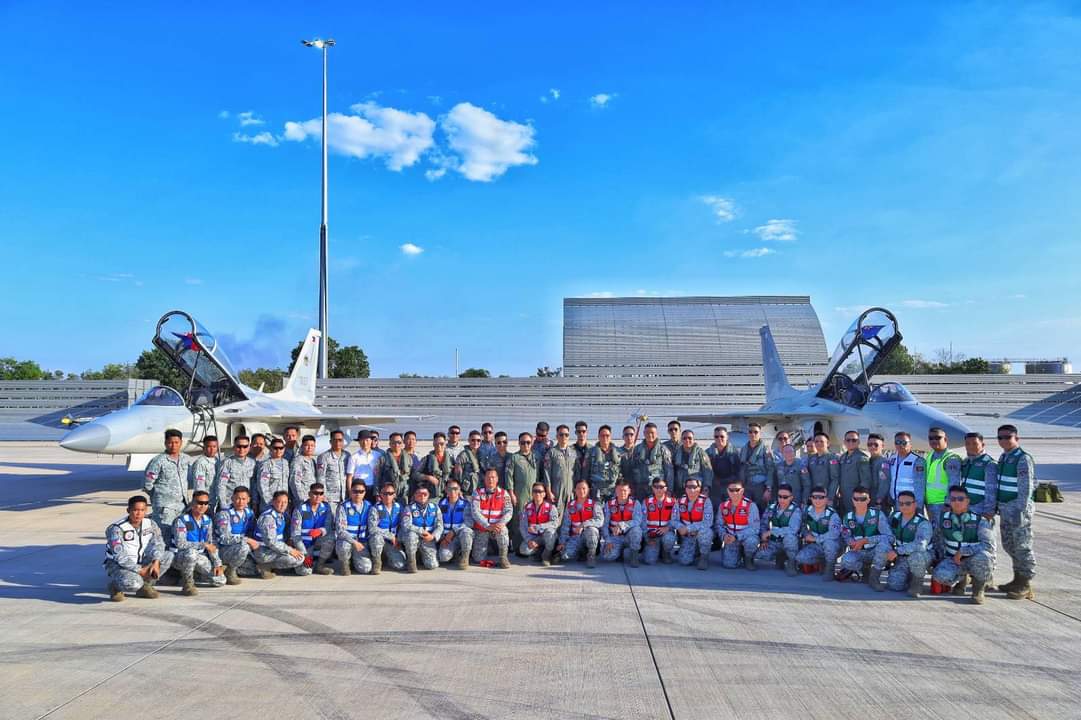Philippines Sends Four FA-50PH Light Combat Aircraft to Join Exercise Pitch Black 2024
If Malaysia sends three F/A-18D Hornet fighter jets to Exercise Pitch Black 2024 in Australia, its neighbor, the Philippines, will be sending four FA-50PH light fighter jets to the large-scale air force exercise.
(DEFENCE SECURITY ASIA) — If Malaysia sends three F/A-18D Hornet fighter jets to Exercise Pitch Black 2024 in Australia, its neighbor, the Philippines is sending four of its FA-50PH light combat aircraft to the large-scale air force exercise.
Exercise Pitch Black 2024, involving 20 countries from around the world, begins from July 12 to August 2.
This marks the first overseas exercise for the fighter jets acquired by the Philippine Air Force in 2014.
The Philippine Air Force currently operates 12 FA-50PH light fighter jets, developed by South Korea’s Korea Aerospace Industries (KAI).
All 12 jets serve in the 5th Fighter Wing of the Philippine Air Force.
In a recent statement, Philippine Air Force spokesperson Colonel Ma Consuelo Castillo confirmed that the four FA-50PH jets arrived in Darwin alongside a C-130 Hercules transport aircraft.

In addition to the Philippines, other Southeast Asian countries utilizing variants of the FA-50/T-50 fighter/trainer jets include Thailand and Indonesia.
Thailand has 14 T-50 jets, the Philippines operates 12 FA-50 jets, and Indonesia uses 22 T-50 jets.
In May of last year, Malaysia signed an approximately RM4 billion agreement to acquire 18 of the latest variant of the FA-50 light fighter jets, known as the FA-50M (FA-50 Block 20).
The Royal Malaysian Air Force (RMAF) is set to begin receiving these jets by the end of 2026.
The FA-50M variant purchased by Malaysia is more advanced and capable than the FA-50 jets operated by the Republic of Korea Air Force (ROKAF) and other countries in the region, including Thailand, the Philippines, and Indonesia.
Currently, only the RMAF and the Polish Air Force have opted for this latest “Fighting Eagle” variant.

The Malaysian FA-50 variant will have capabilities similar to the FA-50 jets bought by Poland, with both air forces operating variants equipped with Active Electronically Scanned Array (AESA) radars and advanced Sniper targeting pods.
Poland has acquired 48 FA-50 jets, a mix of Block 20 and Block 10 variants.
Alongside the AESA “PhantomStrike” radar developed by RTX (formerly known as Raytheon) and the Sniper ATP, Malaysia’s FA-50M light fighter jets will also feature an aerial refueling probe for extended missions.
Additionally, the RMAF’s FA-50 Block 20 jets will come equipped with U/VHF radio systems similar to those used in the latest F-16 Block 70 fighter jets. The FA-50 Block 20 jets will also include “Link 16 Block Upgrade 2,” a secure military tactical data link that ensures safe and interception-free communications.
The latest FA-50 variant is capable of carrying precision-guided bombs and other advanced weaponry.
The FA-50PH light fighter jets are currently the most capable aircraft in the Philippine Air Force’s inventory, but the Southeast Asian country is expected to soon decide on its preferred Multi-Role Combat Aircraft (MRCA).


The two leading contenders for the Philippine contract are the F-16, developed by Lockheed Martin from the United States, and the JAS39 Gripen, developed by Saab Group from Sweden.
According to regional defense observers, the Swedish-made JAS39 Gripen is considered the frontrunner in the competition.
Apart from the MRCA, the Philippine Air Force has also expressed interest in expanding its fleet of FA-50 jets, particularly with more capable variants.
“Yes, it is an option (to add more FA-50 jets). The FA-50 is an excellent lead-in trainer aircraft and can be considered a multi-role fighter as it can conduct both air-to-air and air-to-ground operations.
It provides pilots with excellent training opportunities before transitioning to more advanced aircraft,” said Philippine Air Force Chief Lt. General Connor Anthony Canlas Sr, as quoted by the Philippine News Agency in 2022. — DSA



Comments are closed.